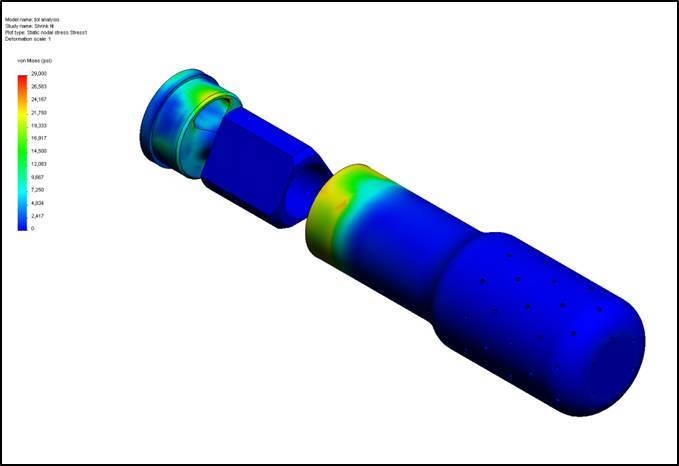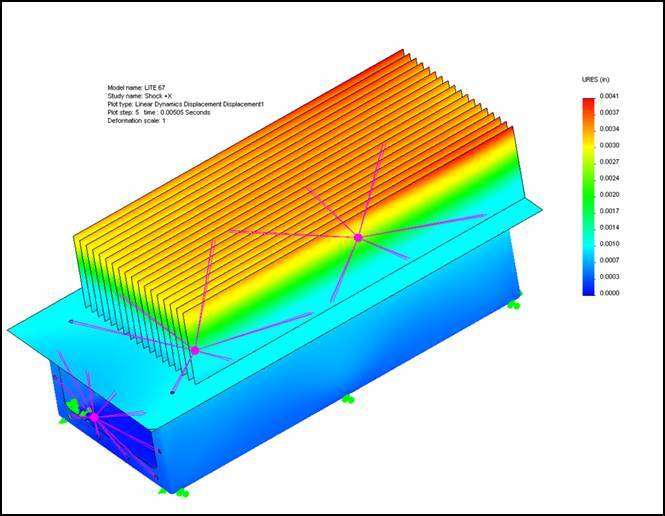TECHNICAL ANALYSIS
TriAxial can use SolidWorks simulation tools to verify the quality and performance of your design before you commit to production. These comprehensive analysis tools let you analyze and simulate models, providing insight into the performance. The results can help select/identify areas to reduce weight and often improve durability and manufacturability. Costs for development and material can be optimized to improve margins. We can compare design alternatives to best meet specific customer requirements.
We can perform dynamic analyses of parts and assemblies. Techniques deployed include simulation of time history loading, steady-state harmonic input, response spectrum, and random vibration excitations. We can input excitation curves of forces in random vibration analysis. We can then evaluate stress, displacement, velocity, and acceleration.
Thermal Analysis
Thermal analyses are very common in electronics products. Hot spots can be identified and air flow or conductive paths to remove heat can be optimized. Tight component packaging can be evaluated on printed circuit boards, ensuring that they do not deform or crack under excessive thermal. Thermal analyses can predict temperature distribution, temperature gradient, and heat flowing in the model. Also, we can estimate the heat exchanged between the model and the ambient environment.
Stress Analysis
Linear stress analysis is routinely and accurately applied in the design phase of our projects. We can set up accurate fixtures, loading conditions, select the suitable mesh elements (beams, shell, or solid), and make skilled decisions on where to refine mesh for optimum results. Detailed reports are produced to help your team understand the results.
Nonlinear Analysis
Nonlinear analysis is required when stiffness changes during the deformation process. The stiffness matrix [K] must be updated as the nonlinear solver progresses through an iterative process. Materials behave under their operating conditions. FEA programs have been utilized to simulate these behaviors, providing the engineer response data. TriAxial is skilled in utilizing these tools. We can use them to help predict and verify that requirements are met, or to improve your product performance.
deformation process. The stiffness matrix [K] must be updated as the nonlinear solver progresses through an iterative process. Materials behave under their operating conditions. FEA programs have been utilized to simulate these behaviors, providing the engineer response data. TriAxial is skilled in utilizing these tools. We can use them to help predict and verify that requirements are met, or to improve your product performance.
Motion Analysis
Motion simulation provides quantitative information about the kinematic (position, velocity, and acceleration) and the dynamic (joint reactions, inertial forces, and power requirements) of all the components of a moving mechanism. TriAxial has the tools and expertise to produce accurate motion simulation results.

